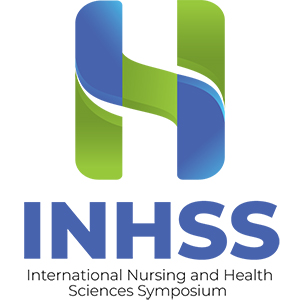Experience of nurses using the basic nursing science in performing nursing care for patients at RSUD Dr. Soedomo Trenggalek, Indonesia

Published: 9 February 2023
Abstract Views: 787
PDF: 213
Publisher's note
All claims expressed in this article are solely those of the authors and do not necessarily represent those of their affiliated organizations, or those of the publisher, the editors and the reviewers. Any product that may be evaluated in this article or claim that may be made by its manufacturer is not guaranteed or endorsed by the publisher.
All claims expressed in this article are solely those of the authors and do not necessarily represent those of their affiliated organizations, or those of the publisher, the editors and the reviewers. Any product that may be evaluated in this article or claim that may be made by its manufacturer is not guaranteed or endorsed by the publisher.
Similar Articles
- Dwi Setiowati, Waras Budi Utomo, Marisca Agustina, Integration in nursing curriculum for building Islamic nurses' character in Indonesia: a descriptive qualitative approach , Healthcare in Low-resource Settings: Vol. 11 No. 2 (2023): Transforming Healthcare in Low-Resource Settings: a Multidisciplinary Approach Towards Sustainable Solutions, Part I
- Rifky Octavia Pradipta, Ferry Efendi, Abdullah Saleh Alruwaili, Mohammad Rizal Diansya, Anna Kurniati, The journey of Indonesian nurse migration: a scoping review , Healthcare in Low-resource Settings: Vol. 11 No. 2 (2023): Transforming Healthcare in Low-Resource Settings: a Multidisciplinary Approach Towards Sustainable Solutions, Part I
- Bruno Henrique Souza Izidório, Kátia Eliane Santos Avelar, Flávia dos Santos Lugão de Souza, Patricia Maria Dusek, Agnaldo José Lopes, Multidisciplinary nursing practice in a low-resource setting in Southeast Brazil , Healthcare in Low-resource Settings: Vol. 12 No. 2 (2024)
- Arista Maisyaroh, Eko Prasetya Widianto, Syaifuddin Kurnianto, Rizeki Dwi Fibriansari, Nurses' experiences regarding nursing competence in the isolation wards during COVID-19 pandemic , Healthcare in Low-resource Settings: Vol. 12 No. 1 (2024): Transforming Healthcare in Low-Resource Settings: a Multidisciplinary Approach Towards Sustainable Solutions, Part II
- Dyah Wiji Puspita Sari, Yuni Sufyanti Arief, Ahsan Ahsan, The relationship between clinical education and nursing students' patient safety competencies , Healthcare in Low-resource Settings: Vol. 12 No. 1 (2024): Transforming Healthcare in Low-Resource Settings: a Multidisciplinary Approach Towards Sustainable Solutions, Part II
- Norfidah Mohamad, Zamzaliza Abdul Mulud, Nurain Aqila Mohd Daud, Nurhidayah Abdul Halim, Noraini Hashim, Sleep quality and its relationship with mental well-being and work performance among nurses: a cross-sectional study , Healthcare in Low-resource Settings: Vol. 12 No. 3 (2024): Transforming Healthcare in Low-Resource Settings: a Multidisciplinary Approach Towards Sustainable Solutions, Part III
- Rinik Eko Kapti, Yuni Sufyanti Arief, Mira Triharini, Qori 'ila Saidah, Ari Damayanti Wahyuningrum, The effect of coping intervention on maternal competency in caring for premature infants at home , Healthcare in Low-resource Settings: Vol. 11 No. 2 (2023): Transforming Healthcare in Low-Resource Settings: a Multidisciplinary Approach Towards Sustainable Solutions, Part I
- Niko Dima Kristianingrum, Yati Sri Hayati, Annisa Wuri Kartika, Fransiska Imavike Fevriasanty, Selsa Rifziqka Heltha Novian Haryono, Ayut Merdikawati, The role of family support in managing death anxiety among the elderly , Healthcare in Low-resource Settings: Vol. 12 No. s1 (2024): 4th International Nursing and Health Sciences Symposium
- Masani Elmahdy, Faiza Ali Nasor, Prevalence and correlates of complementary and alternative medicine utilization among infertile women attending selected fertility clinics in Khartoum state , Healthcare in Low-resource Settings: Vol. 12 No. 2 (2024)
- Israfil Israfil, Ah Yusuf, Ferry Efendi, Maria Agustina Making, Ni Luh Putu Inca Buntari Agustini, Exploring the primary health facility availability, health control, drug consumption, and healthy living behavior among patients with hypertension , Healthcare in Low-resource Settings: Vol. 12 No. 1 (2024): Transforming Healthcare in Low-Resource Settings: a Multidisciplinary Approach Towards Sustainable Solutions, Part II
You may also start an advanced similarity search for this article.

 https://doi.org/10.4081/hls.2023.11213
https://doi.org/10.4081/hls.2023.11213




